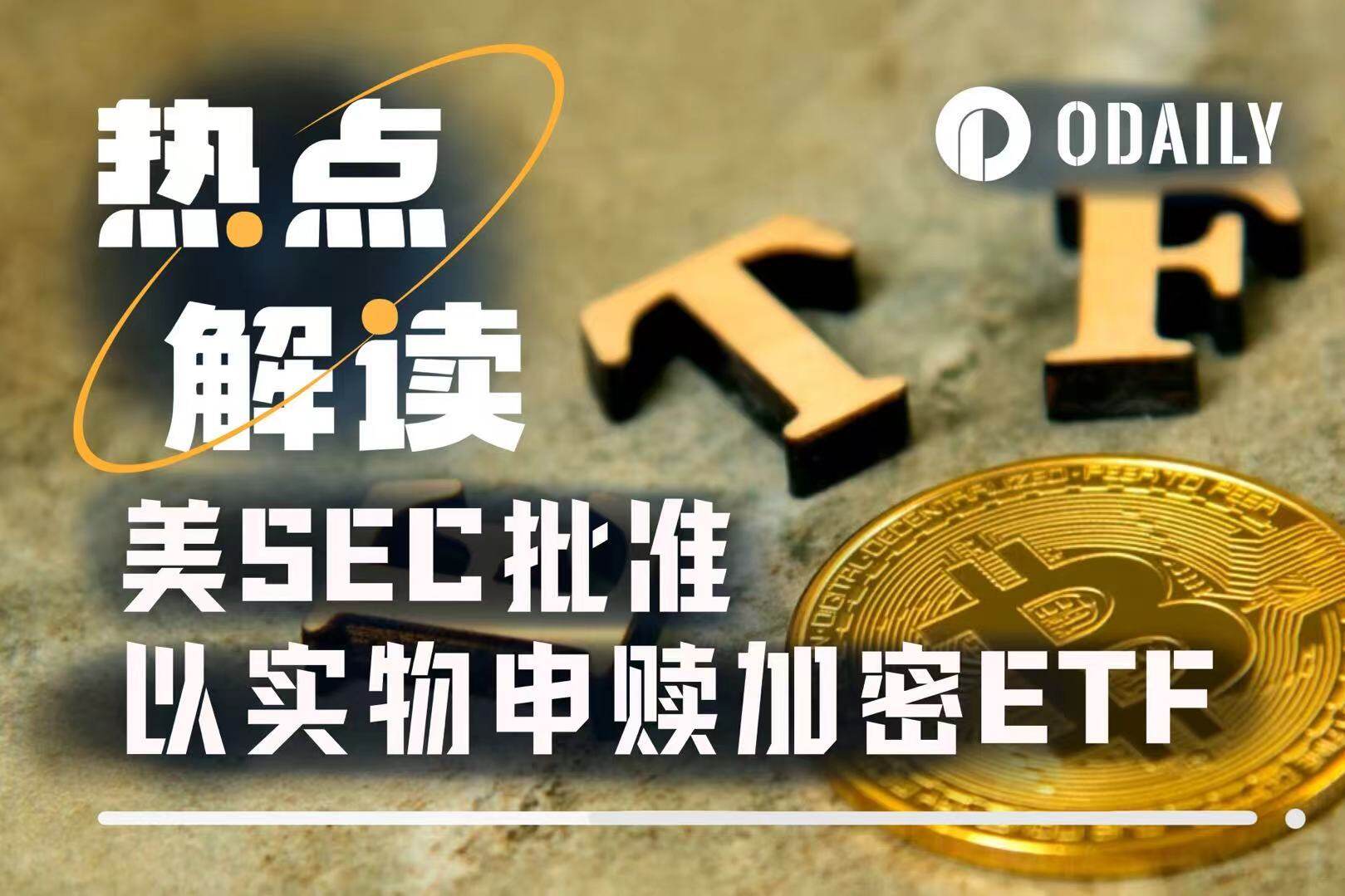Original | Odaily Planet Daily (@OdailyChina)
On July 29, the U.S. SEC officially allowed authorized participants (AP) to create and redeem crypto ETFs in physical form. This means that in the future, Bitcoin and Ethereum ETFs will be treated similarly to other commodity ETFs (such as oil and gold), allowing for the creation and redemption of ETF shares in physical form, whereas previously, Bitcoin and Ethereum ETFs were limited to cash-based creation and redemption.
Cash Form vs. Physical Form
So, what is the difference between creating and redeeming crypto ETFs in cash form versus in physical form?
Cash Form: AP settles with the ETF issuer in cash
The process for creating and redeeming Bitcoin and Ethereum ETFs in cash form is briefly outlined as follows:
- ETF Creation Process
The ETF issuer publishes a basket of cash amounts daily, representing the total cash required to create one "creation unit";
Authorized participants (AP) deliver cash to the ETF issuer;
After receiving the cash, the ETF issuer purchases the corresponding amount of crypto assets on the market and includes them in the ETF custody pool;
Finally, the ETF issuer issues the corresponding number of ETF shares to the AP.
- ETF Redemption Process
When the market price of the ETF is below the daily net asset value (NAV), the AP buys the corresponding number of ETF shares in the secondary market;
The AP returns these shares to the ETF issuer;
The ETF issuer sells the corresponding amount of Bitcoin/Ethereum based on the redeemed shares, converting it back to cash in the spot market;
The issuer then returns this cash to the AP, completing the redemption.
Physical Form: AP settles with the ETF issuer in "physical" (i.e., coins)
- ETF Creation Process
The ETF issuer specifies a "creation unit," usually consisting of tens of thousands of ETF shares, with the corresponding net asset value (NAV) being the total amount of crypto assets the AP needs to deliver;
The AP "packages" the specified basket of crypto assets and transfers it to a designated custody account through a pre-agreed secure custody and transfer protocol with the ETF issuer;
After the issuer verifies that the received assets are correct, they deliver the corresponding number of ETF shares to the AP.
- ETF Redemption Process
When the market price of the ETF on the exchange is below its NAV, the AP buys at least one creation unit's worth of ETF shares in the secondary market;
The AP returns this batch of ETF shares to the issuer and requests a "physical redemption";
After confirming receipt of the ETF shares, the issuer transfers an equivalent amount of crypto assets (according to the latest NAV and holding weights) back to the AP from the custody account;
The AP receives the corresponding crypto assets.
What Does It Mean?
From the above, it can be seen that allowing the creation and redemption of crypto ETFs in physical form does not mean that ordinary investors can directly exchange their ETF shares for crypto assets. Instead, it refers to the settlement subject between authorized participants (AP) and the ETF issuer changing from cash to "crypto physical." This not only means that existing crypto ETF assets (such as Bitcoin and Ethereum) have gained regulatory parity with commodities like gold and oil, but also brings the following benefits:
Reducing AP Costs and Improving Market Efficiency
In cash form, the ETF issuer must use the cash delivered by the AP to purchase crypto assets. Given the rapidly changing crypto market, this process may increase transaction costs and slippage.
In physical form, the AP directly delivers crypto assets to the ETF issuer, effectively avoiding additional transaction costs and slippage, thus reducing costs. Additionally, by minimizing delays and costs associated with spot trading, it not only reduces the integration process with the ETF issuer but also allows the ETF's secondary market price to be closer to NAV, enhancing market efficiency.
Moreover, in cash form, cash transactions may trigger capital gains distributions at the fund level, but physical transfers generally do not constitute capital gains at the fund level, further reducing the AP's tax costs.
Reducing the Impact of ETF Redemptions on Crypto Market Prices
In cash form, ETF redemptions mean that the ETF issuer must passively sell crypto assets in the market to obtain cash, which may trigger "liquidity crunches."
However, in physical form, ETF redemptions only represent the ETF issuer returning crypto assets to the AP without market transactions. After receiving Bitcoin or Ethereum, whether the AP sells immediately, how they sell, and to whom, entirely depends on their own strategy. Compared to a large-scale liquidation by the ETF fund, the AP's actions are more decentralized, market-driven, and flexible.
Providing a More Efficient Mechanism for ETF Arbitrageurs
The basis for ETF market arbitrage lies in the "primary market arbitrage" mechanism, where APs create/redeem based on the price difference between the ETF and NAV. In cash form, due to the time lag between spot trading and ETF creation/redemption, market price fluctuations may lead to failed arbitrage or increased costs. In physical form, APs can directly establish or close positions with crypto assets, resulting in higher arbitrage efficiency, larger scale, and faster speed.
At the same time, a more efficient arbitrage mechanism can help crypto ETFs' prices closely track their net asset values, thereby enhancing liquidity.
Integrating Crypto Assets into the Deep Structure of Mainstream Finance
International commodity ETFs, such as those for gold, silver, and crude oil, often use physical forms for creation and redemption. The adoption of the same mechanism for crypto ETFs signifies that crypto assets are being integrated into the deep structure of mainstream financial products, promoting global institutional allocation of crypto assets.
The introduction of the physical mechanism provides a structural buffer for future larger-scale capital inflows, benefiting institutions, pension funds, hedge funds, and other long-term capital entrants.
免责声明:本文章仅代表作者个人观点,不代表本平台的立场和观点。本文章仅供信息分享,不构成对任何人的任何投资建议。用户与作者之间的任何争议,与本平台无关。如网页中刊载的文章或图片涉及侵权,请提供相关的权利证明和身份证明发送邮件到support@aicoin.com,本平台相关工作人员将会进行核查。





